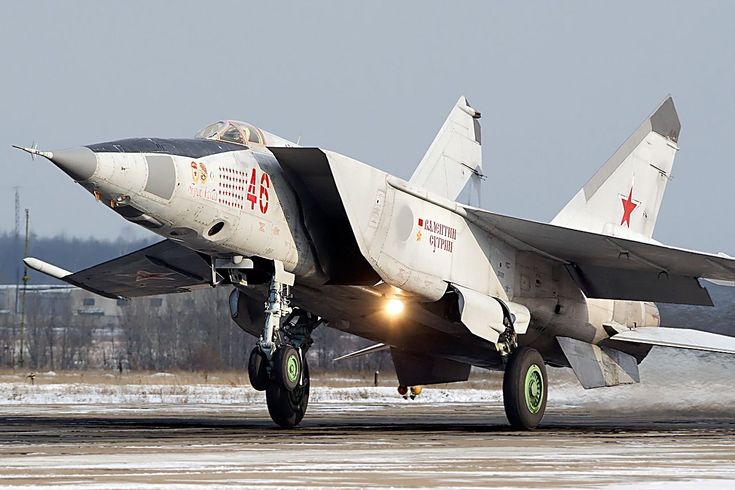The Lagacy Of Russian Foxbat MIG-25 A Fighter Jett
In the vast skies of military aviation history, certain aircraft have risen to iconic status, defining eras and rewriting the rules of aerial warfare. Among these legendary machines stands the MiG-25 Foxbat, a marvel of Soviet engineering that captured the imagination of the world during the height of the Cold War. This supersonic interceptor and reconnaissance aircraft wasn’t just a product of its time; it was a statement—a bold declaration of Soviet prowess in the face of rising Western technological dominance. Let us dive deep into the awe-inspiring story of the MiG-25, exploring its design, performance, legacy, and the indelible mark it left on the aviation world.
The Birth of a Legend
The 1960s were a period of intense rivalry between the United States and the Soviet Union. As the Americans introduced advanced aircraft like the Lockheed SR-71 Blackbird and the North American XB-70 Valkyrie, Soviet leaders realized the need for a high-speed interceptor capable of countering these high-altitude threats. Thus, the MiG-25 was born, a direct response to the challenge posed by Western advancements.
Developed by the Mikoyan-Gurevich Design Bureau, the MiG-25 made its maiden flight in 1964 and entered service in 1970. Designed primarily as an interceptor, the aircraft could also perform reconnaissance missions, making it a versatile asset in the Soviet arsenal. The Foxbat’s development was shrouded in secrecy, with its very existence sparking fear and speculation in the West.
Design: A Masterpiece of Purpose
The MiG-25’s design philosophy was simple yet revolutionary: prioritize speed and altitude over maneuverability. Constructed primarily from nickel-steel alloy—a decision driven by cost and availability—the aircraft was engineered to withstand the extreme temperatures generated during high-speed flight. Despite its relatively simple design, the MiG-25 was a technical marvel in many respects.
Key Features:
- Twin-Engine Power: The Foxbat was powered by two Tumansky R-15B-300 turbojet engines, each capable of producing up to 11,200 kgf of thrust. This gave the aircraft an unparalleled maximum speed of Mach 3.2.
- Imposing Airframe: With a length of 23.82 meters and a wingspan of 14.01 meters, the MiG-25 had a striking presence. Its large, boxy air intakes and angular lines were not just visually distinctive but also functional, ensuring efficient airflow to the engines.
- Advanced Avionics: The MiG-25 was equipped with the “Smerch-A” radar system, enabling it to detect and track targets at long ranges. Its cockpit instrumentation, though relatively basic by modern standards, was designed for high-speed interception missions.
- Specialized Materials: To achieve its performance goals, the aircraft’s construction included over 80% nickel-steel, along with titanium and aluminum components.
Performance: Speeding Past the Competition
The MiG-25 was built to be fast—blisteringly fast. With a top speed of Mach 3.2 (approximately 3,950 km/h), it was among the fastest military aircraft ever produced. However, this speed came with a trade-off; sustained Mach 3 flight could lead to significant engine wear and damage. Operationally, pilots were instructed to limit speeds to Mach 2.8 to preserve the aircraft’s longevity.
Specifications:
- Ceiling: 20,700 meters (67,900 feet)
- Range: 1,860 km (1,156 miles) with internal fuel
- Armament: Equipped with four air-to-air missiles (R-40 series), the MiG-25 was a formidable interceptor capable of neutralizing high-speed bombers and reconnaissance aircraft.
Cold War Intrigue: The Foxbat’s Legacy
The MiG-25’s entry into service sent shockwaves through NATO. Western intelligence initially overestimated its capabilities, believing it to be a highly maneuverable air superiority fighter. This perception changed dramatically in 1976 when Soviet pilot Viktor Belenko defected to Japan with his MiG-25P. The incident allowed the West to examine the aircraft in detail, revealing its strengths and limitations.
Strategic Impact:
- Intelligence Gains: Belenko’s defection exposed the MiG-25’s strengths in speed and altitude but also highlighted its compromises in maneuverability and avionics sophistication.
- Technological Advancements: The Foxbat’s capabilities spurred the United States to develop more advanced fighters like the F-15 Eagle, emphasizing balanced performance rather than extreme speed.
- Propaganda Value: For the Soviet Union, the MiG-25 symbolized technological prowess. Its ability to challenge American reconnaissance aircraft, including the SR-71 Blackbird, was a point of national pride.
Operational History: In the Heat of Battle
While the MiG-25 was primarily an interceptor, it saw combat in several conflicts, showcasing its versatility and resilience.
- Middle East: The Foxbat was used extensively by Arab air forces during the Yom Kippur War and later conflicts. It proved effective in reconnaissance roles and occasionally engaged in dogfights.
- Iraq-Iran War: Iraqi MiG-25s were used for reconnaissance and interception missions, with several notable engagements against Iranian F-14 Tomcats.
- Modern Conflicts: Despite being considered outdated by modern standards, the MiG-25 has continued to see limited use in recent years, a testament to its robust design.
The Human Factor: Stories of Courage and Skill
The MiG-25’s story is not just about engineering; it’s also about the pilots who flew it. Operating at the edge of human capability, these aviators faced immense challenges, from high-speed intercepts to navigating at the fringes of Earth’s atmosphere.
Viktor Belenko’s Defection:
Belenko’s daring escape to Japan in 1976 remains one of the most dramatic episodes in Cold War aviation history. His journey highlighted both the aircraft’s capabilities and the challenges faced by its pilots.
The Enduring Legacy
Though production of the MiG-25 ceased in the early 1980s, its legacy endures. The aircraft paved the way for the development of its successor, the MiG-31, which remains in service today. Additionally, the Foxbat’s influence can be seen in the design philosophies of subsequent generations of high-speed interceptors and reconnaissance aircraft.
The MiG-25 stands as a symbol of a bygone era, a time when the race for technological supremacy pushed boundaries and inspired awe. Its raw power, uncompromising design, and role in shaping the course of aviation history ensure that it will be remembered as one of the greatest fighter jets ever built.
Conclusion: The Foxbat’s Place in History
The MiG-25 Foxbat is more than an aircraft; it is a testament to human ingenuity and determination. Born out of a need to defend against emerging threats, it became a symbol of strength and innovation. Its story is one of triumph and controversy, of groundbreaking achievements and hard-learned lessons.
Today, as we look back at the MiG-25’s incredible journey, we are reminded of the extraordinary heights humanity can reach when driven by ambition and vision. The Foxbat will forever hold its place among the legends of aviation, an enduring reminder of the power of speed, precision, and purpose.














Post Comment